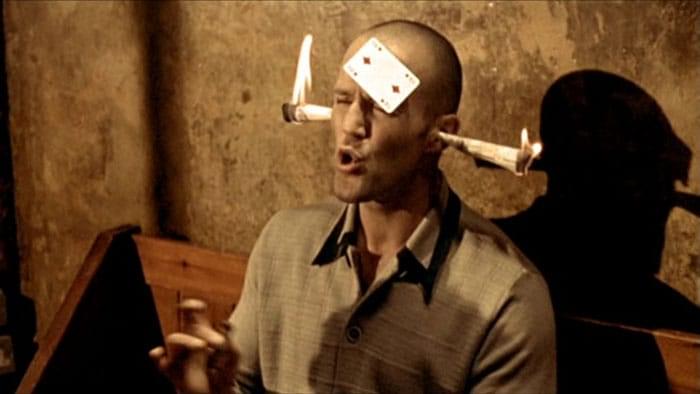
Surrealism is a tricky medium. On the surface it looks like random weirdness that can be interpreted a million different ways, but that’s not exactly the truth. The truth is that surrealism is just another method to tell a story and there is only one true interpretation: the author’s. Everything else is just perception. I can’t say I blame people for thinking otherwise. The surrealists have always cultivated an image of drug induced improvisation. William S. Burroughs had his cut-up technique where he would take several pages of his writing and tear them vertically, mixing the left side of page five (for example) with the right side of page nine making for some very wild prose; and then you had Jackson Pollock who sure looked like he was just splashing paint around like a madman. However, in the case of Burroughs, he started out with solid writing on those pages before he switched them hurly burly. While Pollock would work himself up into such a frenzy that the splashes began to look like an actual image to him of what he was trying to express. Both times you had literal imagery being transformed into something representative. Because the goal of surrealism is not about telling a straight story, but about getting the people who are watching to incorporate the author’s ideas into their own experience and kind of tell themselves the story. Good surrealism acts as both a stimulant and structure for the imagination, filling just enough gaps to lead your audience roughly where you want them to go. Bad surrealism is just pretentious titting around without a point.
What I’m getting at here is that no matter what it looks like there is a story. Only instead of being told it’s suggested. But you have to be careful; if you leave the audience without any sense of direction for too long you’re going to lose them. This is where Eye of Cruelty makes the first of three crucial mistakes. The story of shut-in Edgar (Christopher Maag), a cartoonist who witnesses a murder in the alley behind his apartment and his nightmarish descent into paranoia, digresses much too often into segues that don’t seem to have any relation to the themes and ideas of the movie they’re in. At one point we even leave Edgar altogether and focus on his neighbors. I think what happened is that Hyatt wrote it loose when it should have been tight. He went into too many directions at once assuming that we’ll be able to follow his train of thought, but sadly we can’t.
The second mistake is that the film is far too long. At 60 minutes it drags for the last 20. However, I have to tip my hat towards Hyatt, this is a very difficult film to get into but he keeps your interest in the proceedings for as long as humanly possible. Despite the problems I’m outlining, he’s got skills. It’s just that he needs to learn how to be a more ruthless editor and cut out anything superfluous that gets in the way of his movie’s point.
The last mistake is the use of sound, or rather the lack of it. Instead of a soundtrack where you can hear the actors speaking and sound effects Hyatt uses an eerie droning score. Before I watched Eye, I would have thought this could have worked really well, but now that I’ve seen it done, meh. The problem is that the sonic void disconnects you from what’s happening on the screen. Which is something that you desperately don’t want in a surreal film. You want the audience to participate in the viewing as much as possible.
On the plus side this isn’t some shallow masturbatory exercise. Hyatt understands the first and most important rule of creating surrealism, which is that you start off with the real and twist it around like a funhouse mirror. As odd as things may get, Edgar doesn’t inhabit bizarro land. The events he witnesses are real, but he experiences them in a distorted way and the film shows us his distortion. Furthermore, Hyatt adds a lot of smart subtext about loneliness, isolation and violence. It’s not an easy film, you have to give a little, not just sit there and expect to be entertained; but if you have the patience this can be a rewarding experience. Another good point is the black and white cinematography. Hyatt uses his camera and tiny budget to create a look that’s a stone’s throw away from being German expressionism. Finally, actor Chris Maag’s body language is note perfect. He emotes just enough to give some clue into his character’s mind without overacting, which would be an easy thing to do in a silent film such as this.
I’ll hazard to say that with a re-recorded soundtrack adding vocals and sound effects and a serious edit to reduce it’s running length to 40 minutes this could be a damn good film. As it stands now, it’s an interesting experiment that doesn’t work.
